Especially in times of a global pandemic, the right strategy can be crucial to organizational success. To uncover the challenges and opportunities, we conducted following case studies on H&M, Aldi, and Zoom. Therefore, we used our new “Consumer Mood Tracker”.
We analyzed a dataset of more than 12 million tweets (from March 17th to April 15th) to gather insights about what consumers are saying and how they are feeling about the three brands. To illustrate the differences, we compared them based on the Symanto Mood Index (SMI)* which reflects how positive (or negative) the consumer mood is regarding any specific brand. In this case, all three have lived through their individual storylines in the past weeks and consumers haven’t held back in letting us know what they’re thinking.
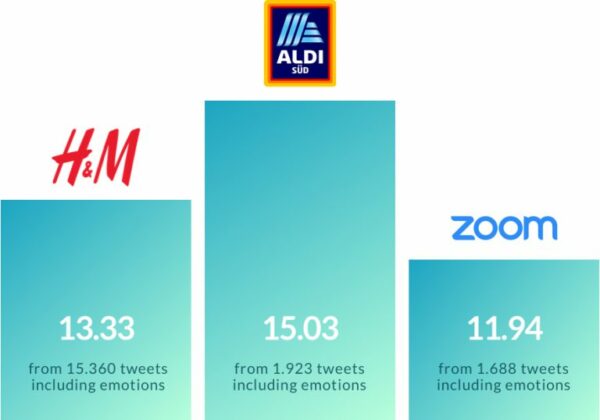
*Mood Index = 100 * #Tweets with positive emotion / #Total Tweets with emotion
Mood Index ranges from 0-100, 0-lowest mood, 100-highest mood.
This shows that Aldi consumers have been experiencing the most positive mood, achieving an SMI-score of 15.03. Surprisingly, H&M captures 2nd place in our ranking with a score of 13.33, despite the negative backlash over refusing to pay rent. The video conferencing service Zoom, who enables many businesses and schools to continue with their work, unfortunately comes in last place with a rating of 11.94 SMI-points. As one may guess, an index only tells one side of the story. Digging deeper, we made use of our customer profiling module to explain how the rational and emotional customer profile proportions make up the overall SMI for a brand.
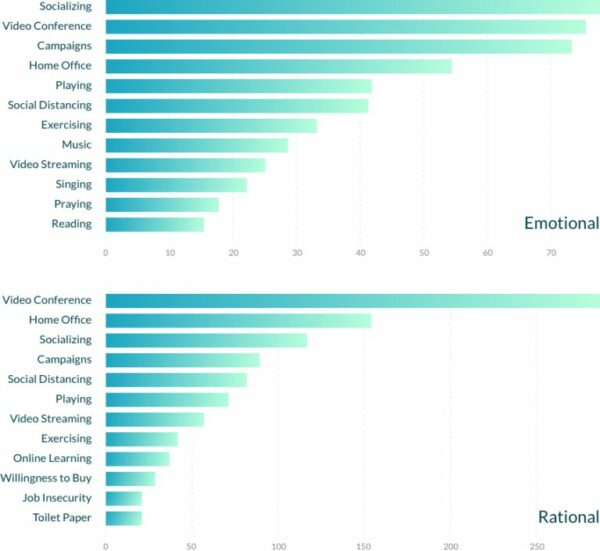
Breaking down the Numbers ALDI
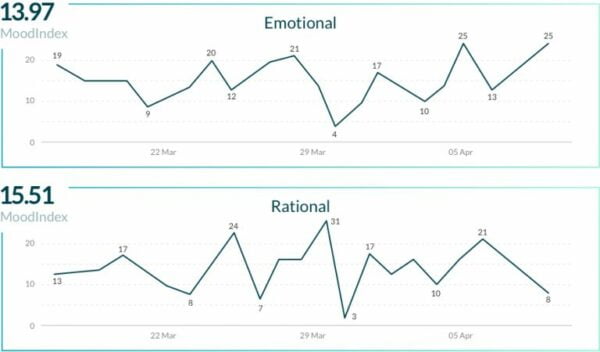
In comparison to Aldi’s average SMI score of 15.03, we could see that emotional consumers were less satisfied (13.97) with the brand than rational consumers (15.51). For instance, the positive peak for rational consumers on March 29th was due to the announcement that Aldi will pay its staff a bonus since they are essential workers during this pandemic and face high risk maintaining the infrastructure. In contrast, the emotional consumers faced a drop in their mood around March 21st induced by others stockpiling toilet paper and dairy products. Interestingly, rational consumers weren’t affected by this specific worry as much as emotional consumers were.
H&M
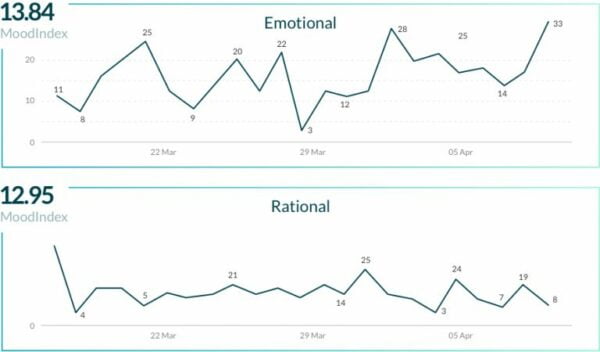
Despite the outrage about paying (or not paying) rent fees in Germany, H&M managed to keep, on average, a higher SMI than Zoom. While the emotional customer segment was strongly affected by the breaking news on March 28th and 29th, resulting in a drop down to 3 SMI points, the rational customer segment doesn’t seem to have been affected at all. The rational consumer base of H&M even seems more leveled since they’re not facing peaks which are that quick and strong.
ZOOM
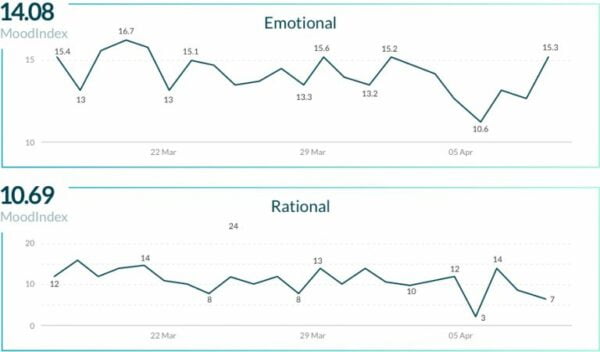
Where would we be without Zoom these days? Sure, there are other video conferencing tools. However, Zoom has undeniably been the one application used the most. The emotional segment achieved more than 3 SMI points more than the rational segment. Let’s put this into context by illustrating what happened with the brand in the past month.
Due to lockdown restrictions, people have been making more use of digital video conferencing services such as Zoom. The use cases expand from hosting university lectures, to virtual church meetings, and even medical conferences between patients and doctors. This increased demand resulted in a strong lift for the brand. However, with an increased number of hacked video conferences, the concern about privacy issues grew quickly. This is best reflected by a score drop on April 5th, where the rational segment experienced a drop down to 3 SMI points. It was that same day when Zoom announced that they will halt their efforts to develop new features and instead focus on fixing their privacy issues.

This also finds support from the way our two segments perceive the tool. The emotional segment sees Zoom more as a tool to overcome the Lockdown and to host video conferences to temporarily replace socializing. In contrast, the rational consumer segment sees it primarily as what it is: a video conferencing tool. In this case Zoom seems to be in a more functional position by serving the purpose of overcoming home office challenges during the lockdown period, with socializing only being at the fourth place.
What does that mean?
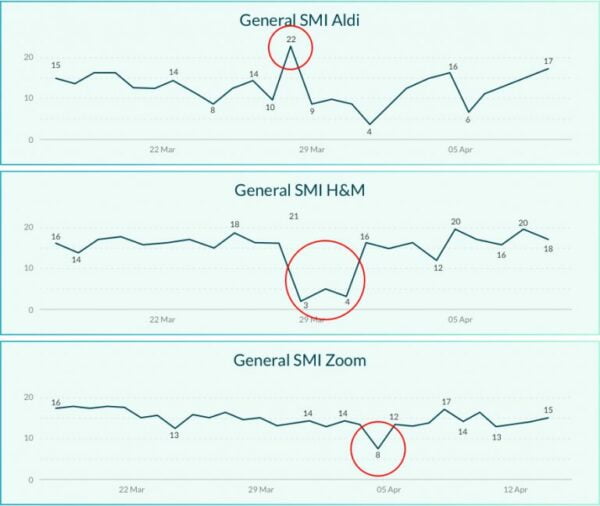
As said in the beginning, all three brands performed in their very own way. What has been quite remarkable is when we compare all three overall SMI’s from the brands.

While Aldi’s SMI has increased due to the company granting its employees bonuses and increased pay, H&M and Zoom both lived through their own crisis. However, when following the graphs after their peaks, we can see that the SMI finds its way back to the initial level quite quickly. It seems like consumers live in the present and focus on new issues every day. (In the next days/weeks we will explore the mid and long-term impact of these issues on the overall brand image as well. Stay tuned!)
There is, however, an upside to all this. What we were able to illustrate here is that brands which normally don’t have an engagement on social media, such as Aldi or Zoom, suddenly seem to have a huge audience in times of a global crisis. Brands can leverage from this and see how they can target their specific audiences based on our consumer profiles to improve their SMI scores sustainably. For Zoom it would be possible to automatically derive the percentage of rational and emotional consumers in order to adapt the strategy of a possible online campaign or adjust their communication policy for their dominant consumer profile.
If you’re interested in tracking your own brand and benchmark what it is that your consumers like about you and what your competitors’ consumers like about them, reach out to us to discuss your specific use case.

